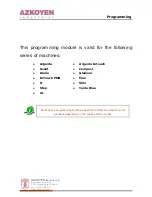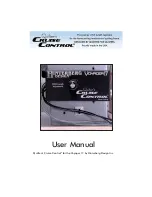
- 15 -
Changing threads (binding together)
Changing threads is quite simple with the following procedure:
1. Cut the yarn above the spool support
2
(Fig. 34) and place the new
roll of thread on the spool support
2
.
2. Tie the ends of the new and the old thread together (Fig. 35).
3. Place the thread tension selector
r
/
t
/
z
/
u
at "0" (Fig. 36) and lift
the sewing foot
a
.
4. Pull on the other end of the yarn until the knot passes under the sewing
foot
a
.
5. For threading it in the needle, pull on the other end until the knot is in
the eye of the needle and then cut the yarn to the left and right of the
knot. Then carry out the rethreading.
Set the stitch length
The stitch length can be adjusted from 1.0 to 4.0 mm. Almost all overlock
work is carried out with a stitch length of 2.5 – 3.5 mm.
Turn on the adjustment wheel for stitch length
5
(Fig. 37) to adjust the
stitch length:
• A stitch length of 3 mm is recommended for most sewing.
• For the working of heavy fabrics, a stitch length of 4 mm is to be re-
commended.
• For the working of light fabrics, a stitch length of 2 mm is to be re-
commended..
With these settings you will produce respectable seams and the fabric
will not be crimped.
Setting the seam width
The width of seams can be determined both by changing the needle position
and via the seam width adjustment knob
f
.
... by using the right or left needle
The width of the seam can be determined by using the left or the right
needle.
• Only the left needle is used:
5.7 mm
• Only the right needle is used:
3.5 mm
Fig. 34
Fig. 35
Fig. 36
Fig. 37
















































